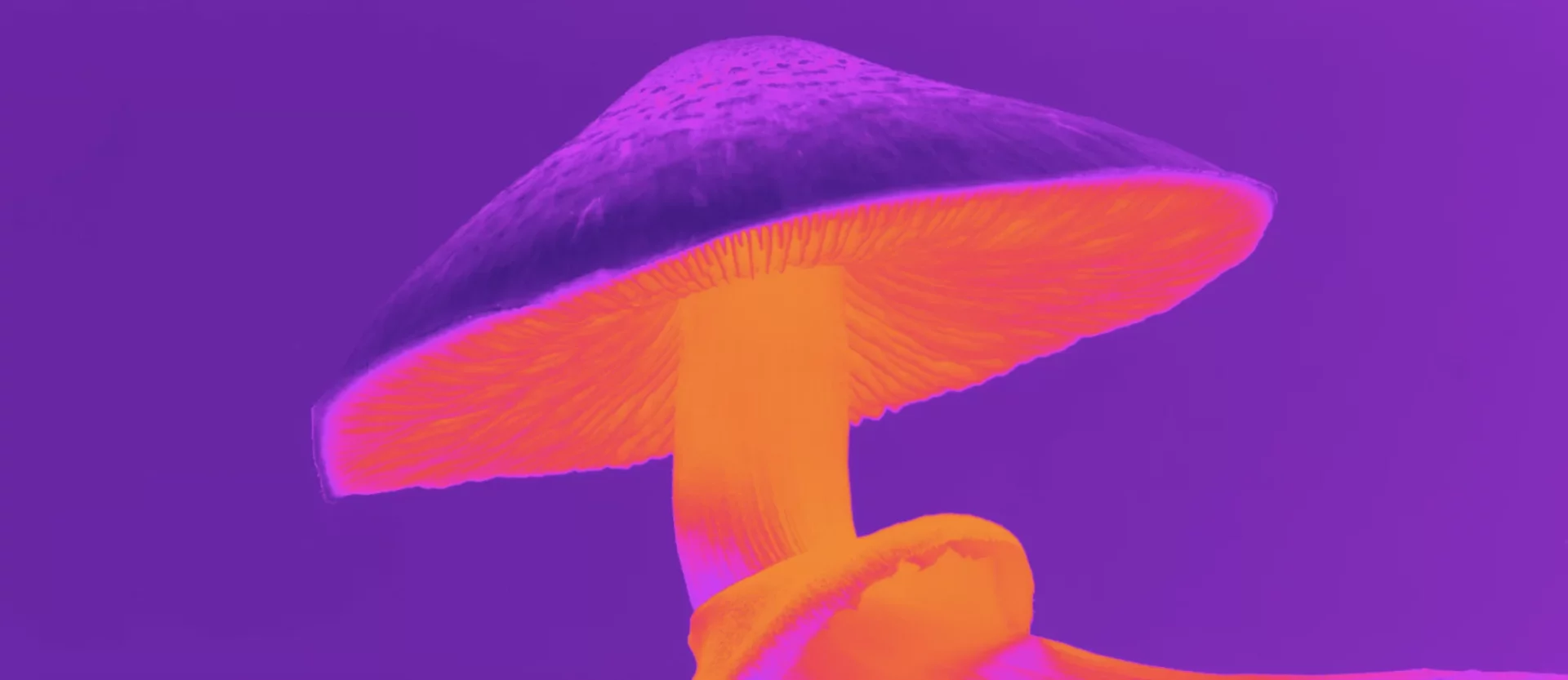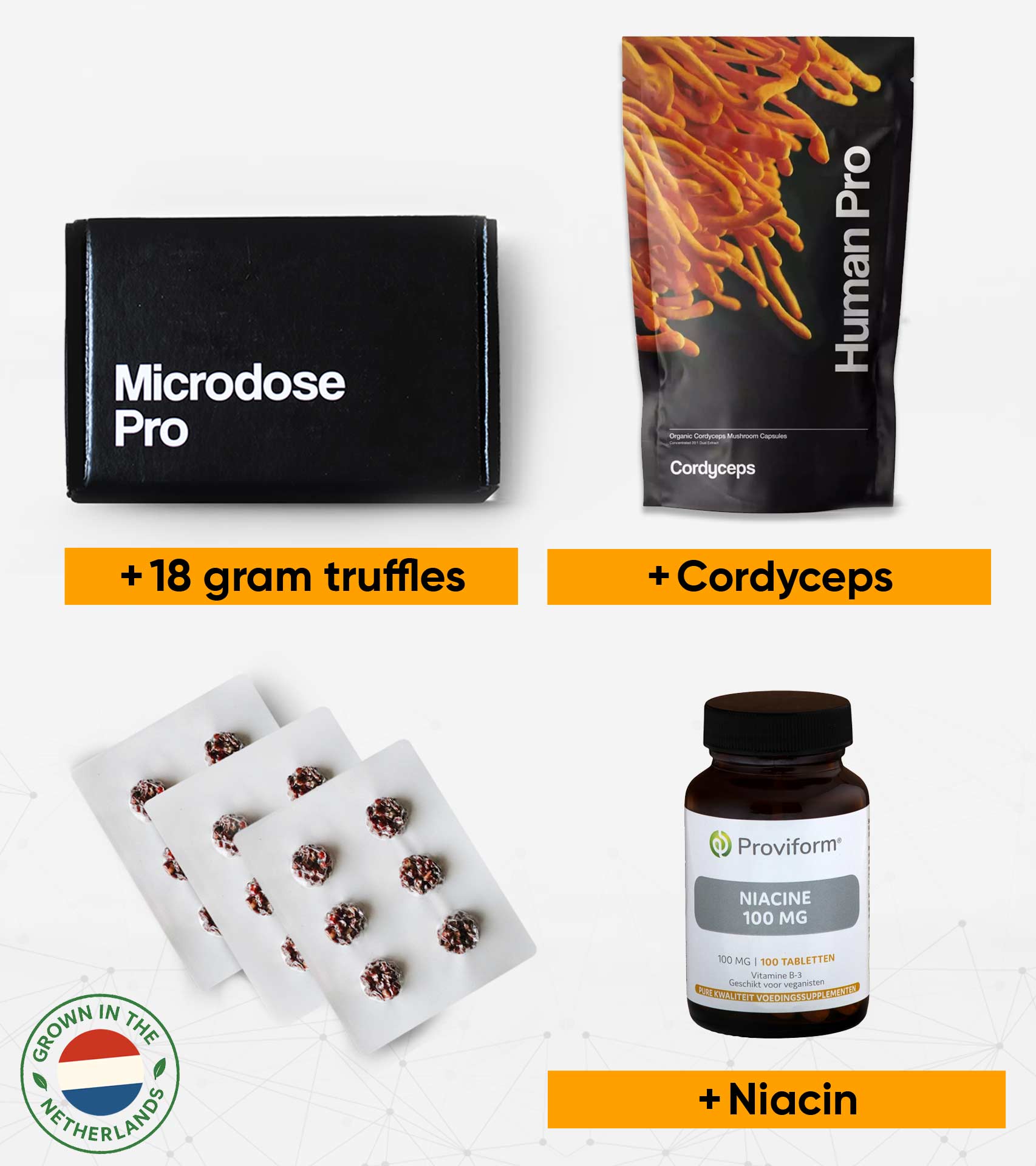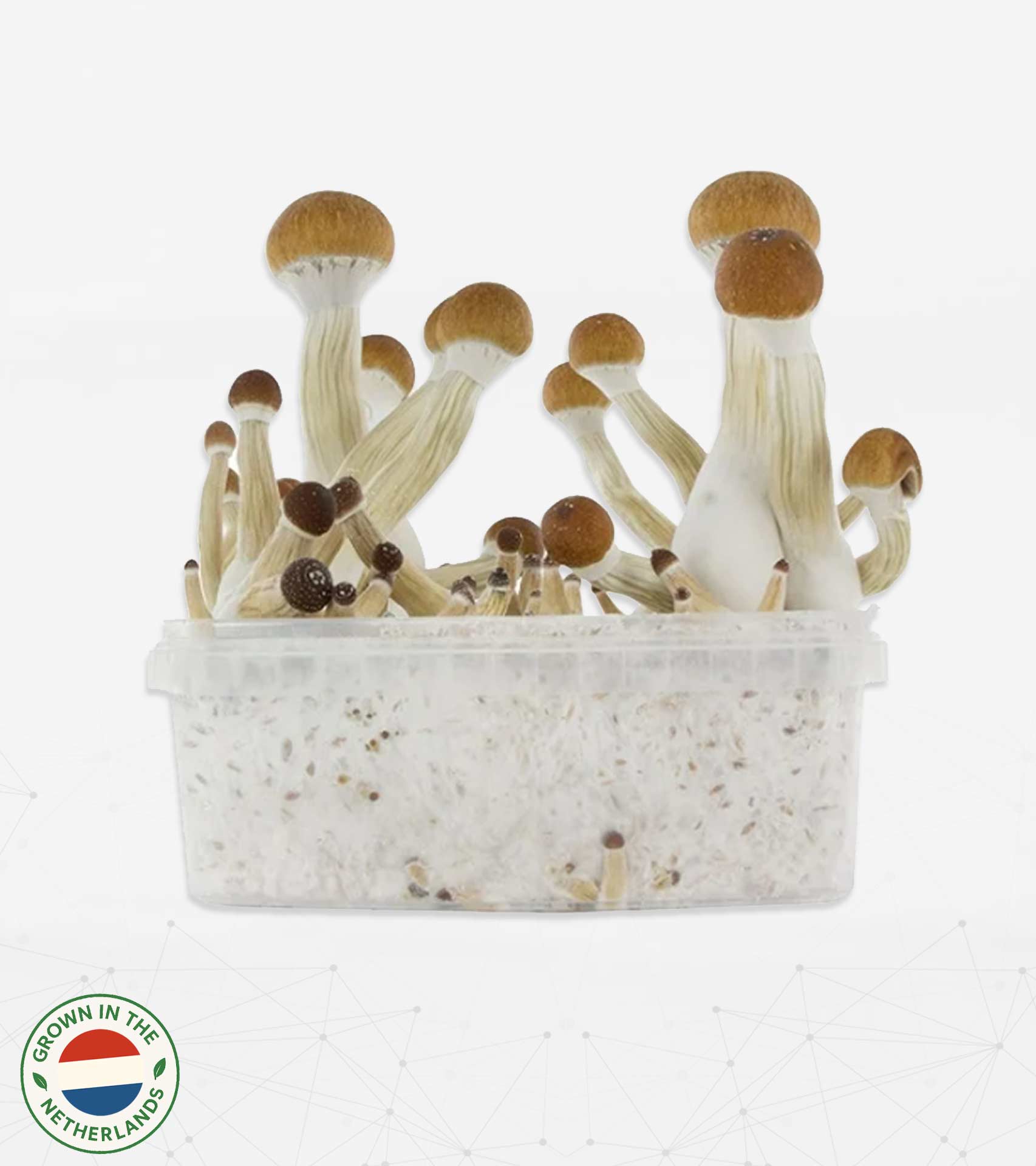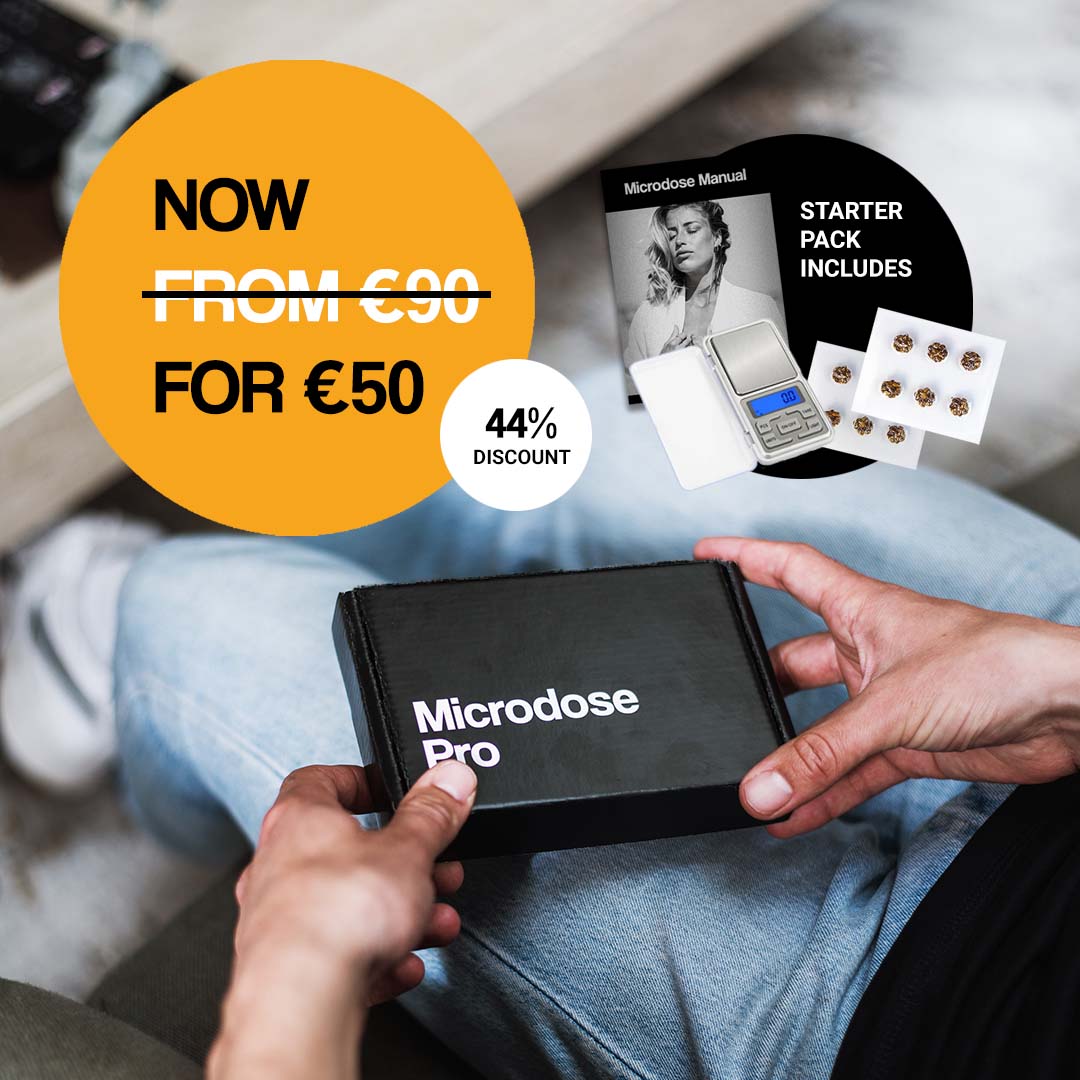Around the world, interest is growing in microdosing psilocybin mushrooms, whose advocates are pushing hard for legalization – and succeeding in places. We look into the science of these remarkable fungi.
What is microdosing?
Microdosing is the practice of consuming very small amounts of a psychedelic substance to improve mental aspects like creativity, calmness, mood, focus or motivation. Psychedelics include LSD, cannabis, mescaline, iboga, and the psilocybin found in magic mushrooms or magic truffles (the latter being our trade specialty).
Microdosing is a very different experience to tripping or getting high, because it involves taking such a low dose of the psychedelic in question that the effect on you, mentally and physically, is very subtle and unlikely to disrupt your day at all. The aim of microdosing is simply to make your day a little bit better – and sometimes a lot more productive (see our article about microdosing as a flow hack here).
What are magic mushrooms?
Modern research on magic mushrooms began in the 1960s – but it is likely that they were used by prehistoric people for rituals as long ago as 10 000 BC – read more about magic mushrooms in history here.
Most magic mushrooms are small mushrooms with long, pale stems and light- to mid-brownish caps. Like the “truffle” part of the mushroom, which is a knobbly cluster of mycelium that develops below ground, the stem and cap of a magic mushroom contain active psychedelic compounds called baeocystin, psilocin, and, primarily, psilocybin.
There are hundreds of species of mushrooms containing psilocybin, but some of the most popular and renowned include Psilocybe cubensis (which is easy to cultivate indoors); the potent Psilocybe semilanceata (“Liberty cap”), and Psilocybe azurescens; also known as Flying Saucers, Blue Runners, Blue Angels, or Azzies. Meet more luminaries from the magic mushroom community here.
Take note: some magic mushrooms look a lot like poisonous mushrooms that grow in the same environment. We wouldn’t generally advise trying to pick wild magic mushrooms,
for this reason (if you insist, however, this guide may help you to spot toxic species in the wild). There are a number of online stores that sell magic mushroom growing kits, and that is really a safer way to go.
An aside: Did you know?
- Mushroom-shaped stones made by ancient Mayans date back more than 2,000 years.
- Rock art found in the Sahara dating back 9 000 years appears to depict hallucinogenic mushrooms.
- Siberian shamans, who used to bring gifts of hallucinogenic mushrooms to households every winter, may be the origin of the Santa Claus myth.
- Just one dose of magic mushrooms can make your mind more “open” for over a year.
- In testing, magic mushrooms have been shown to dissolve the fear impulse in animals.
What is psilocybin?
Psilocybin is a naturally occurring psychedelic compound produced by a number of different fungi species. By “psychedelic”, what’s meant is that it has the ability to alter human consciousness because it mimics the behavior of existing neurotransmitters in the brain at a heightened level.
Swiss chemist Albert Hofmann first isolated psilocybin from the mushroom species Psilocybe mexicanain 1959. Hofmann’s employer, Sandoz, proceeded to bottle and sell psilocybin to physicians and clinicians around the world for use in psychedelic psychotherapy. Then, towards the end of the 1960s, the law began to tighten around psilocybin and other psychedelics and the promising exploration of its benefits to therapy was largely curtailed, as the “war on drugs” took hold.
In subsequent decades, magic mushrooms were largely used as a recreational resource on the fringes of society, along with LSD and other psychedelics. Only in the last decade has widespread scientific interest in the therapeutic benefits of psilocybin resurfaced, and the limited use of psilocybin is gradually being legalised in some places.
What are the benefits of microdosing magic mushrooms?
The psilocybin in magic mushrooms mimics the positive effects of serotonin, a neuro transmitting chemical that affects brain activity (in general, the higher your serotonin level, the happier and more relaxed you feel). While research is still continuing into the wider potential of microdosing magic mushrooms, these are some of the most commonly discussed benefits:
Improved mood
Many studies cite a sustained improvement in mood as the most noticeable effect of microdosing mushrooms. One study, published in the Harm Reduction Journal, found that “The most common benefit was improved mood, which suggests that researching microdosing as a potential pharmacotherapeutic treatment for depression could be worthwhile” (Thomas Anderson, a Ph.D student, and cognitive neuroscientist).
Another study, with a small group of volunteers, found that the mood-affecting benefits of psilocybin could last as long as up to a month after a single dose.
Reduced depression
A better mood is just the beginning. Some research suggests that microdosing psilocybin could be a useful therapy for more serious conditions, like bipolar disorder (the University of California is running a survey on this aspect), and obsessive-compulsive disorder (OCD),
in which sufferers can’t help thinking, or doing, the same things repeatedly all day long – checking on doors and lights, updating their diary, washing their hands, etc.
Psilocybin has also been shown to reduce anxiety and serious depression – this effect was particularly highlighted in a study published in 2016, which found that hospital patients suffering from clinical anxiety and depression caused by life-threatening cancer, reported an improvement in their mood, both right after taking psilocybin and several months later.
Meanwhile, a study published in the Journal of Psychopharmacology reported that a single psilocybin dose produced an antidepressant response in cancer patients that lasted up to five years.
Given such results, many in the mental health fraternity are lobbying for the easing of legislation on psilocybin, at least within controlled therapeutic settings. It may well be that, in time, psilocybin and one or two other natural psychedelics will take center-stage in the treatment of mental illness and replace the current synthetic drugs in use.
More creativity and curiosity
Research has shown that psilocybin has the ability to unlock rigid mental patterns, allowing the brain to become more free-thinking, more lateral, more “playful” in a sense. Here’s Janet Chang, writing in her microdosing blog: “I was less self-conscious and more creative. Every day, more ideas and insights would pop into my mind than I knew what to do with. I held a greater appreciation for the arts … I joked and laughed more”. For older people, psilocybin can help to keep their mind young and more agile (“you’re only as old as you feel”, right?) – read our piece on the anti-aging benefits of psilocybin here).
There’s a reason why many novelists, musicians and artists have been known to take magic mushrooms. Recent studies suggest that psilocybin and other psychedelics, including LSD – stimulate greater openness, cognitive flexibility and creative thinking. As psilocybin microdosers ourselves, we have certainly found that to be true.
How do you microdose magic mushrooms?
The first thing to do is to determine your dose, erring on the side of caution – “less is more”. It’s generally agreed that each microdose should be about 0.1 – 0.5 grams. Between 0.5 – 2 grams is considered to be a low “recreational” dose, while up to 3.5 grams is a “moderate” dose. With 3.5 grams or more, you would become “high” or even experience the beginning of some unpleasant effects. These measurements are for dried Psilocybe cubensis mushrooms and are discussed by Michelle Janikian in Double Blind. Remember that other magic mushroom species that differ in strength.
Also, when going by weight dried mushrooms may be ten times more potent than fresh mushrooms, because of the water content in the latter. On the other hand, many microdosers say they find fresh mushrooms more potent (see what people say on Reddit, here). Our advice? Just start small, either way.
Once you’ve decided on your first microdose, make sure conditions are right for you to be microdosing. That means you should be in a relaxed state of mind and are preferably somewhere quiet and peaceful, where you’ll have some time to yourself with little interruptions.
When you take the microdose, you can simply chew the fresh or dried mushroom tissue. Not everyone likes the earthy taste, so you might want to opt for powdered dried mushrooms – it’s also easier to measure out microdoses on a micro-scale with powder – and mix the powder into water or juice (not beer or wine; we don’t recommend ever mixing alcohol and microdosing). You can also deposit mushroom powder into empty gelatin capsules and swallow the capsules.
It’s wise to follow a “protocol” when microdosing mushrooms, i.e. a safe and practical microdosing schedule that has been followed by other microdosers. The “father of modern psychedelics”, James Fadiman, developed this protocol, in which you microdose once every three days over the course of a month (Fadiman suggests taking smaller microdoses in the first two weeks, then increasing the dose in the next couple of weeks, if you’re not feeling any adverse effects). Meanwhile, Paul Stamets, a famous mycologist, suggests a schedule of five days on, using the “Stamets Stack”, a microdosing combination of two types of mushroom with Niacin added to the mix.
Should I have any concerns for my health?
The drawbacks of ingesting too high a dose of magic mushrooms range from distorted perceptions and hallucinations to anxiety, nausea, fear, and disorientation – but don’t worry; you’d need to have quite a lot, or be consuming one of the more powerful variants, like Psilocybe azurescens ; the effects of microdosing magic mushrooms should be mild indeed; the intention being to experience only gentle, positive changes to your mood and mental state.
Some people argue that magic mushrooms are unpredictable and could affect mood and behavior in a variety of different ways. Since we are primarily talking about microdosing mushrooms here, we don’t need to segue into a lengthy debate about the possible behavioral dangers of magic mushrooms.
Psilocybin is not physically addictive at all, meaning that if you stop the microdosing, you won’t experience withdrawal. However, it is still possible to become mentally addicted to it, if you are particularly habit-forming. Microdosing in phases – e.g. three weeks on, three weeks off, repeat – is a good way to help you avoid a consolidated habit from forming.
Also, it is advisable not to microdose everyday – we recommend one day on, two days off, during your microdosing phases. Those off-days will allow you to assess what effects the microdosing is having on you and, if necessary, to adjust your microdoses.
Although psilocybin mushrooms are considered to be relatively safe, especially in microdoses, it’s still risky to buy them from an illegal source, because you cannot confirm the purity and concentration of what you’re buying (you are quite safe, however, with our psilocybin truffles, which are pure fungal material, measured out and pre-packaged in small, microdose-sized doses).
Let’s talk more about the legal aspect
As with marijuana, the legislation around psilocybin is gradually showing signs of easing in various countries; certainly within the mental health sector. Health Canada recently granted exemptions to a number of nurses, doctors, therapists, and social workers, meaning they can now possess and use psilocybin mushrooms for personal experimentation, to assess the therapeutic benefits. In November 2020, Oregon made history by becoming the first U.S. state to legalize psilocybin and began laying out plans for regulating the substance’s use in therapy. When the USA starts loosening legislation on substances, it’s a good indicator that many other companies will follow.
What about the Netherlands?
Until 2008, psychedelic mushrooms and truffles were both legal and could be freely bought here. In 2007 the Dutch government banned more than 100 species of mushrooms. However, the sclerotium form of magic mushrooms – i.e. the “truffle” form – was excluded from the ban, thus truffles remain a legal substance in the country. Read more about the Netherlands’ policy on psychedelics – and here’s a handy list of the legality of magic mushrooms around the world, by country.
For our part, although we can tell you all about magic mushrooms, we can only specifically advocate the responsible microdosing of legal psilocybin truffles.
Remember to chronicle your microdosing experience
Journaling is the habit of logging your daily experience of microdosing. Why is this a good idea?
- Journaling your experience will help you track the effects of microdosing magic mushrooms and to work out, should you experience negative effects, whether you should scale back the frequency or amount of your microdoses.
- Microdosing is a journey of discovery – and journaling and sharing your experience of microdosing will add to the knowledge on psilocybin. Your journal could in the future be a helpful resource for those new to microdosing mushrooms.
Here is the microdosing journal of one of our founders – with a downloadable template you can use, too.
Sources:
https://thethirdwave.co/microdosing/psilocybin-mushrooms/
https://en.wikipedia.org/wiki/Legal_status_of_psilocybin_mushrooms#List_by_country
https://doubleblindmag.com/beyond-psilocybe-cubensis-10-magic-mushroom-strains-you-should-know-about/
https://medium.com/better-humans/how-one-year-of-microdosing-helped-my-career-relationships-and-happiness-715dbccdfae4
https://www.marijuanamoment.net/
https://thethirdwave.co/microdosing-psilocybin-mushrooms-stamets-stack/
https://www.zmescience.com/medicine/microdosing-depression-and-anxiety-0323/
https://microdelics.ca/the-ultimate-guide-to-microdosing-4-aco-dmt/
https://www.thecut.com/2018/05/microdosing-guide-and-explainer.html
https://www.ted.com/talks/paul_stamets_6_ways_mushrooms_can_save_the_world?language=en
https://www.zmescience.com/medicine/mind-and-brain/magic-mushroom-effects-one-month-0423/
https://journals.sagepub.com/doi/10.1177/0269881119897615
https://www.treehugger.com/facts-about-magic-mushrooms-4868810
https://doubleblindmag.com/how-to-take-shrooms-shroom-dosage-shroom-effects/




